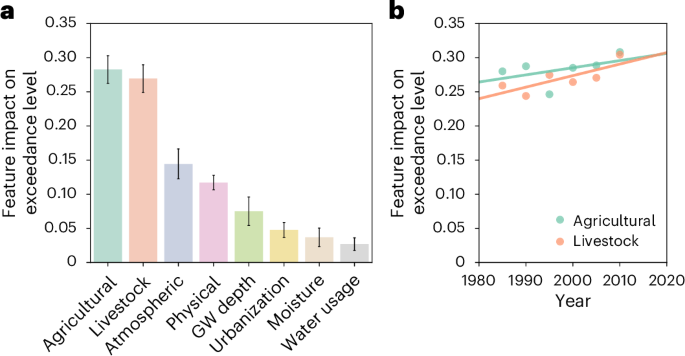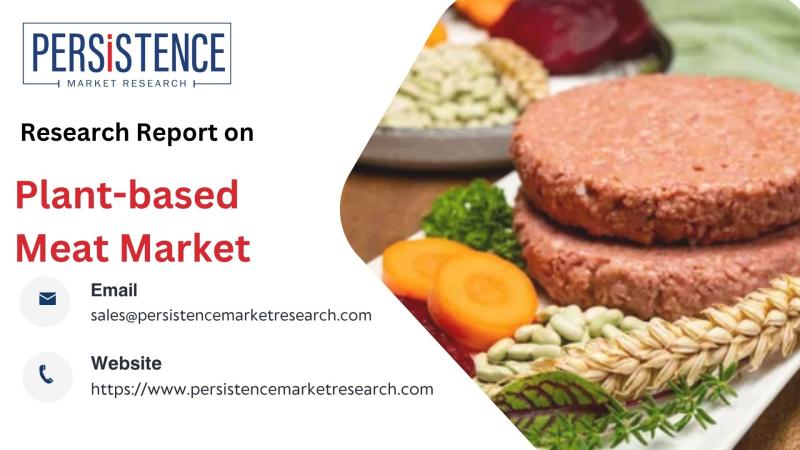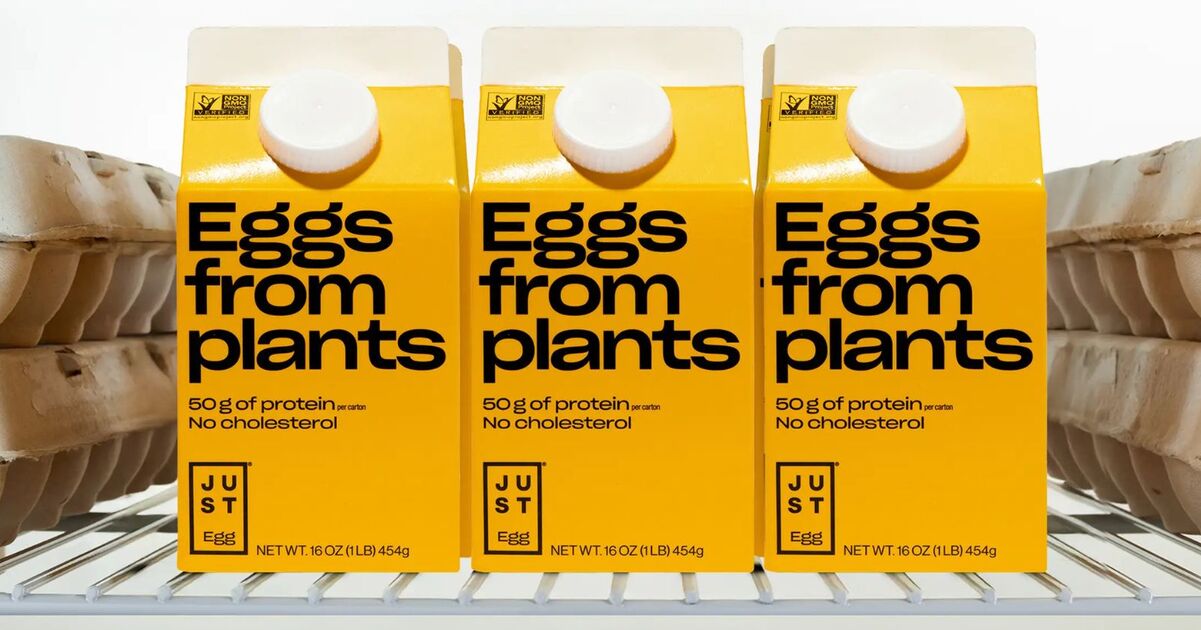Tilman, D. & Clark, M. Global diets link environmental sustainability and human health. Nature 515, 518–522 (2014).
Herrero, M. et al. Greenhouse gas mitigation potentials in the livestock sector. Nat. Clim. Chang. 6, 452–461 (2016).
Errickson, F., Kuruc, K. & McFadden, J. Animal-based foods have high social and climate costs. Nat. Food 2, 274–281 (2021).
Ritchie, H. How Much of the World’s Land Would We Need in Order to Feed the Global Population with the Average Diet of a Given Country? (Our World in Data, 2017).
Froehlich, H. E., Runge, C. A., Gentry, R. R., Gaines, S. D. & Halpern, B. S. Comparative terrestrial feed and land use of an aquaculture-dominant world. Proc. Natl Acad. Sci. USA 115, 5295–5300 (2018).
Alexander, P. et al. Could consumption of insects, cultured meat or imitation meat reduce global agricultural land use? Glob. Food Sec. 15, 22–32 (2017).
Xu, X. et al. Global greenhouse gas emissions from animal-based foods are twice those of plant-based foods. Nat. Food 2, 724–732 (2021).
Xu, P. et al. Policy-enabled stabilization of nitrous oxide emissions from livestock production in China over 1978–2017. Nat. Food 3, 356–366 (2022).
Koh, E. H. et al. Nationwide groundwater monitoring around infectious-disease-caused livestock mortality burials in Korea: superimposed influence of animal leachate on pre-existing anthropogenic pollution. Environ. Int. 129, 376–388 (2019).
Zhang, Y., Liu, Y., Zhou, A. & Zhang, L. Identification of groundwater pollution from livestock farming using fluorescence spectroscopy coupled with multivariate statistical methods. Water Res. 206, 117754 (2021).
Li, Y., Bi, Y., Mi, W., Xie, S. & Ji, L. Land-use change caused by anthropogenic activities increase fluoride and arsenic pollution in groundwater and human health risk. J. Hazard. Mater. https://doi.org/10.1016/j.jhazmat.2020.124337 (2021).
Boy-Roura, M., Nolan, B. T., Menció, A. & Mas-Pla, J. Regression model for aquifer vulnerability assessment of nitrate pollution in the Osona region (NE Spain). J. Hydrol. 505, 150–162 (2013).
Matiatos, I. Nitrate source identification in groundwater of multiple land-use areas by combining isotopes and multivariate statistical analysis: A case study of Asopos basin (Central Greece). Sci. Total Environ. 541, 802–814 (2016).
Kivits, T., Broers, H. P., Beeltje, H., van Vliet, M. & Griffioen, J. Presence and fate of veterinary antibiotics in age-dated groundwater in areas with intensive livestock farming. Environ. Pollut. 241, 988–998 (2018).
Zhang, B. et al. Global manure nitrogen production and application in cropland during 1860–2014: a 5 arcmin gridded global dataset for Earth system modeling. Earth Syst. Sci. Data 9, 667–678 (2017).
Kim, S. H. et al. Shift of nitrate sources in groundwater due to intensive livestock farming on Jeju Island, South Korea: with emphasis on legacy effects on water management. Water Res. 191, 116814 (2021).
Christen, C. Meat consumption in the U.S. is growing at an alarming rate. Sentient https://sentientmedia.org/meat-consumption-in-the-us/ (2021).
Tilman, D., Balzer, C., Hill, J. & Befort, B. L. Global food demand and the sustainable intensification of agriculture. Proc. Natl Acad. Sci. USA 108, 20260–20264 (2011).
Ritchie, H., Rosado, P. & Roser, M. Meat and Dairy Production (Our World in Data, 2017).
Chriki, S. & Hocquette, J. F. The myth of cultured meat: a review. Front. Nutr. https://doi.org/10.3389/fnut.2020.00007 (2020).
Steinfeld, H. et al. Livestock’s Long Shadow: Environmental Issues and Options (FAO, 2006).
Howarth, R. W., Boyer, E. W., Pabich, W. J. & Galloway, J. N. Nitrogen use in the United States from 1961–2000 and potential future trends. Ambio 31, 88–96 (2002).
Zhang, X. et al. Managing nitrogen for sustainable development. Nature 528, 51–59 (2015).
Chen, K., Guo, Z., Zhan, Y., Roden, E. E. & Zheng, C. Heterogeneity in permeability and particulate organic carbon content controls the redox condition of riverbed sediments at different timescales. Geophys. Res. Lett. 51, e2023GL107761 (2024).
Chen, K. et al. Influence of vertical hydrologic exchange flow, channel flow, and biogeochemical kinetics on CH4 emissions from rivers. Water Resour. Res. 59, e2023WR035341 (2023).
Burow, K. R., Nolan, B. T., Rupert, M. G. & Dubrovsky, N. M. Nitrate in groundwater of the United States, 1991–2003. Environ. Sci. Technol. 44, 4988–4997 (2010).
Landon, M. K., Green, C. T., Belitz, K., Singleton, M. J. & Esser, B. K. Relations of hydrogeologic factors, groundwater reduction–oxidation conditions, and temporal and spatial distributions of nitrate, Central-Eastside San Joaquin Valley, California, USA. Hydrogeol. J. 19, 1203–1224 (2011).
Gurdak, J. J. & Qi, S. L. Vulnerability of recently recharged groundwater in principle aquifers of the United States to nitrate contamination. Environ. Sci. Technol. 46, 6004–6012 (2012).
Drinking Water Contaminants: National Primary Drinking Water Regulations (US EPA, 2015); https://www.epa.gov/dwreginfo/drinking-water-regulations
de Vries, M. & de Boer, I. J. M. Comparing environmental impacts for livestock products: a review of life cycle assessments. Livest. Sci. 128, 1–11 (2010).
Clark, M. A., Springmann, M., Hill, J. & Tilman, D. Multiple health and environmental impacts of foods. Proc. Natl Acad. Sci. USA 116, 23357–23362 (2019).
Wang, Y. et al. Groundwater quality and health: making the invisible visible. Environ. Sci. Technol. 57, 5125–5136 (2022).
Profeta, A. et al. Consumer preferences for meat blended with plant proteins—empirical findings from Belgium. Futur. Foods 4, 100088 (2021).
Rohmer, S. U. K., Gerdessen, J. C., Claassen, G. D. H., Bloemhof, J. M. & van’t Veer, P. A nutritional comparison and production perspective: reducing the environmental footprint of the future. J. Clean. Prod. 196, 1407–1417 (2018).
Rubio, N. R., Xiang, N. & Kaplan, D. L. Plant-based and cell-based approaches to meat production. Nat. Commun. 11, 6276 (2020).
Tuomisto, H. L. & Teixeira De Mattos, M. J. Environmental impacts of cultured meat production. Environ. Sci. Technol. 45, 6117–6123 (2011).
Oonincx, D. G. A. B. & de Boer, I. J. M. Environmental impact of the production of mealworms as a protein source for humans—a life cycle assessment. PLoS ONE https://doi.org/10.1371/journal.pone.0051145 (2012).
Wade, M. & Hoelle, J. A review of edible insect industrialization: scales of production and implications for sustainability. Environ. Res. Lett. 15, 123013 (2020).
Ignaszewski, E. 2021 U.S. retail market insights: plant-based foods. Good Food Institute https://gfi.org/wp-content/uploads/2022/10/2021-U.S.-retail-market-insights_Plant-based-foods_GFI-1.pdf (2021).
Govorushko, S. Global status of insects as food and feed source: a review. Trends Food Sci. Technol. 91, 436–445 (2019).
Gerhardt, C. You will be eating replacement meats within 20 years. Here’s why. World Economic Forum https://www.weforum.org/agenda/2019/06/you-will-be-eating-replacement-meats-within-20-years-heres-why/ (2019).
Chen, T. & Guestrin, C. XGBoost: a scalable tree boosting system. In Proc. ACM SIGKDD International Conference on Knowledge Discovery and Data Mining 785–794 (Association for Computing Machinery, 2016); https://doi.org/10.1145/2939672.2939785
Pennino, M. J., Leibowitz, S. G., Compton, J. E., Hill, R. A. & Sabo, R. D. Patterns and predictions of drinking water nitrate violations across the conterminous United States. Sci. Total Environ. 722, 137661 (2020).
Nolan, B. T. & Hitt, K. J. Vulnerability of shallow groundwater and drinking-water wells to nitrate in the United States. Environ. Sci. Technol. 40, 7834–7840 (2006).
Mueller, N. D. & Lassaletta, L. Nitrogen challenges in global livestock systems. Nat. Food 1, 400–401 (2020).
Dupas, R. et al. High-intensity rainfall following drought triggers extreme nutrient concentrations in a small agricultural catchment. Water Res. 264, 122108 (2024).
Xie, Y., Crosbie, R., Yang, J., Wu, J. & Wang, W. Usefulness of soil moisture and actual evapotranspiration data for constraining potential groundwater recharge in semiarid regions. Water Resour. Res. 54, 4929–4945 (2018).
Mattick, C. S., Landis, A. E., Allenby, B. R. & Genovese, N. J. Anticipatory life cycle analysis of in vitro biomass cultivation for cultured meat production in the United States. Environ. Sci. Technol. 49, 11941–11949 (2015).
Peters, C. J., Picardy, J. A., Darrouzet-Nardi, A. & Griffin, T. S. Feed conversions, ration compositions, and land use efficiencies of major livestock products in U.S. agricultural systems. Agric. Syst. 130, 35–43 (2014).
He, J., Evans, N. M., Liu, H. & Shao, S. A review of research on plant-based meat alternatives: driving forces, history, manufacturing, and consumer attitudes. Compr. Rev. Food Sci. Food Saf. 19, 2639–2656 (2020).
Lynch, J. & Pierrehumbert, R. Climate impacts of cultured meat and beef cattle. Front. Sustain. Food Syst. https://doi.org/10.3389/fsufs.2019.00005 (2019).
Mekonnen, M. M., Neale, C. M. U., Ray, C., Erickson, G. E. & Hoekstra, A. Y. Water productivity in meat and milk production in the US from 1960 to 2016. Environ. Int. https://doi.org/10.1016/j.envint.2019.105084 (2019).
Bonetti, S., Wei, Z. & Or, D. A framework for quantifying hydrologic effects of soil structure across scales. Commun. Earth Environ. 2, 107 (2021).
He, S., Wu, J., Wang, D. & He, X. Predictive modeling of groundwater nitrate pollution and evaluating its main impact factors using random forest. Chemosphere 290, 133388 (2022).
Zhan, Y. et al. Assessment of spatiotemporal risks for nationwide groundwater nitrate contamination. Sci. Total Environ. 947, 174508 (2024).
Condon, L. E., Atchley, A. L. & Maxwell, R. M. Evapotranspiration depletes groundwater under warming over the contiguous United States. Nat. Commun. 11, 873 (2020).
Vereecken, H. et al. Soil hydrology in the Earth system. Nat. Rev. Earth Environ. 3, 573–587 (2022).
Liu, C., Bartlet-Hunt, S. & Li, Y. Precipitation, temperature, and landcovers drive spatiotemporal variability of groundwater nitrate concentration across the continental United States. Sci. Total Environ. 945, 174040 (2024).
Ransom, K. M., Nolan, B. T., Stackelberg, P. E., Belitz, K. & Fram, M. S. Machine learning predictions of nitrate in groundwater used for drinking supply in the conterminous United States. Sci. Total Environ. 807, 151065 (2022).
Turner, D. & Sumner, M. The influence of initial soil moisture content on field measured infiltration rates. Water SA 4, 18–24 (1978).
Penna, D., Tromp-Van Meerveld, H. J., Gobbi, A., Borga, M. & Dalla Fontana, G. The influence of soil moisture on threshold runoff generation processes in an alpine headwater catchment. Hydrol. Earth Syst. Sci. 15, 689–702 (2011).
Hanrahan, B. R., King, K. W. & Williams, M. R. Controls on subsurface nitrate and dissolved reactive phosphorus losses from agricultural fields during precipitation-driven events. Sci. Total Environ. 754, 142047 (2021).
Adam, D. How far will global population rise? Researchers can’t agree. Nature 597, 462–465 (2021).
Xiang, N. & Zhang, X. The challenges of bringing cultured meat to the market. Nat. Rev. Bioeng. 1, 791–792 (2023).
David, S. et al. Co-culture approaches for cultivated meat production. Nat. Rev. Bioeng. 1, 817–831 (2023).
Zheng, C., Hoffmann, M. R., Mauzerall, D. L., Gan, J. & Song, L. Expanding our horizons on the Earth’s sustainable future. Sustain. Horizons 1, 100001 (2022).
The Sustainable Development Goals Report 2020 (United Nations, 2020).
Xu, P. et al. Fertilizer management for global ammonia emission reduction. Nature 626, 792–798 (2024).
Meat: the future series—options for the livestock sector in developing and emerging economies to 2030 and beyond. WEF https://www3.weforum.org/docs/White_Paper_Livestock_Emerging%20Economies.pdf (2019).
Meat: the future series—alternative proteins. WEF https://www3.weforum.org/docs/WEF_White_Paper_Alternative_Proteins.pdf (2019).
Gilbert, M. et al. Global distribution data for cattle, buffaloes, horses, sheep, goats, pigs, chickens and ducks in 2010. Sci. Data 5, 180227 (2018).
Uwizeye, A. et al. Nitrogen emissions along global livestock supply chains. Nat. Food 1, 437–446 (2020).
Chen, D. et al. Legacy nutrient dynamics at the watershed scale: principles, modeling, and implications. Adv. Agron. 149, 237–313 (2018).
Van Meter, K. J. The Nitrogen Legacy: Understanding Time Lags in Catchment Response as a Function of Hydrologic and Biogeochemical Controls (Univ. Waterloo, 2016).
Sinha, E. & Michalak, A. M. Precipitation dominates interannual variability of riverine nitrogen loading across the continental United States. Environ. Sci. Technol. 50, 12874–12884 (2016).
Basu, N. B. et al. Managing nitrogen legacies to accelerate water quality improvement. Nat. Geosci. 15, 97–105 (2022).
Zang, Y. et al. Quantify the effects of groundwater level recovery on groundwater nitrate dynamics through a quasi-3D integrated model for the vadose zone-groundwater coupled system. Water Res. 226, 119213 (2022).
Min, L., Liu, M., Wu, L. & Shen, Y. Groundwater storage recovery raises the risk of nitrate pollution. Environ. Sci. Technol. 56, 8–9 (2022).
Wu, R. et al. Impacts of land surface nitrogen input on groundwater quality in the North China Plain. ACS ES&T Water 4, 2369–2381 (2024).
Pauloo, R. A., Fogg, G. E., Guo, Z. & Harter, T. Anthropogenic basin closure and groundwater salinization (ABCSAL). J. Hydrol. 593, 125787 (2021).
Podgorski, J. & Berg, M. Global analysis and prediction of fluoride in groundwater. Nat. Commun. 13, 4232 (2022).
Liu, C., Akbariyeh, S., Bartelt-Hunt, S. & Li, Y. Impacts of future climate variability on atrazine accumulation and transport in corn production areas in the midwestern United States. Environ. Sci. Technol. 56, 7873–7882 (2022).
Kuang, X. et al. The changing nature of groundwater in the global water cycle. Science 383, eadf0630 (2024).
Twarakavi, N. K. C. & Kaluarachchi, J. J. Aquifer vulnerability assessment to heavy metals using ordinal logistic regression. Ground Water 43, 200–214 (2005).
Zell, W. O. & Sanford, W. E. Calibrated simulation of the long-term average surficial groundwater system and derived spatial distributions of its characteristics for the contiguous United States. Water Resour. Res. https://doi.org/10.1029/2019WR0267246 (2020).
Assegie, T. A. An effective approach for determining sample size that optimizes the performance of the classifier. Int. J. Intell. Syst. Appl. Eng. 10, 222–225 (2022).
Lundberg, S. M. et al. From local explanations to global understanding with explainable AI for trees. Nat. Mach. Intell. 2, 56–67 (2020).
Mekonnen, M. M. & Hoekstra, A. The Green, Blue and Grey Water Footprint of Farm Animals and Animal Products. Volume 1: Main Report (UNESCO, 2010).
Bohrer, B. M. Review: nutrient density and nutritional value of meat products and non-meat foods high in protein. Trends Food Sci. Technol. 65, 103–112 (2017).
Bordiean, A., Krzyżaniak, M., Stolarski, M. J., Czachorowski, S. & Peni, D. Will yellow mealworm become a source of safe proteins for Europe? Agriculture 10, 1–30 (2020).
Sinke, P., Swartz, E., Sanctorum, H., van der Giesen, C. & Odegard, I. Ex-ante life cycle assessment of commercial-scale cultivated meat production in 2030. Int. J. Life Cycle Assess. 28, 234–254 (2023).
Ma, Y., Wang, H. H., Hua, Y. & Kuang, S. The rise of meat substitute consumption and its impact on the U.S. soybean industry. Purdue Univ. https://ag.purdue.edu/commercialag/home/paer-article/the-rise-of-meat-substitute-consumption-and-its-impact-on-the-u-s-soybean-industry/ (2023).
Dalgaard, R. et al. LCA of soybean meal. Int. J. Life Cycle Assess. 13, 240–254 (2008).
Tuomisto, H. L., Ellis, M. J. & Haastrup, P. Environmental Impacts of Cultured Meat: Alternative Production Scenarios. In Proc. 9th International Conference on Life Cycle Assessment in the Agri-Food Sector (ACLCA, 2014).
Tuomisto, H. L., Allan, S. J. & Ellis, M. J. Prospective life cycle assessment of a bioprocess design for cultured meat production in hollow fiber bioreactors. Sci. Total Environ. 851, 158051 (2022).
Drechsel, P., Heffer, P., Magen, H., Mikkelsen, R. & Wichelns, D. Managing Water and Fertilizer for Sustainable Agricultural Intensification (International Fertilizer Industry Association, 2015).
Salvagiotti, F. et al. Nitrogen uptake, fixation and response to fertilizer N in soybeans: a review. Field Crop. Res. 108, 1–13 (2008).
Bierman, P. M., Rosen, C. J., Venterea, R. T. & Lamb, J. A. Survey of nitrogen fertilizer use on corn in Minnesota. Agric. Syst. 109, 43–52 (2012).
Ruddy, B. C., Lorenz, D. L. & Mueller, D. K. County-Level Estimates of Nutrient Inputs to the Land Surface of the Conterminous United States, 1982–2001 (US Geological Survey, 2006).
Poore, J. & Nemecek, T. Reducing food’s environmental impacts through producers and consumers. Science 360, 987–992 (2018).
Falcone, J. A. Tabular data for selected items from the Census of Agriculture for the period 1950–2017 for counties in the conterminous United States. US Geological Survey https://doi.org/10.5066/P9S4WQHU (2020).
Kozicka, M. et al. Feeding climate and biodiversity goals with novel plant-based meat and milk alternatives. Nat. Commun. 14, 5316 (2023).
U.S. Meat Market Size, Share & COVID-19 Impact Analysis (Fortune Business Insights, 2021); https://www.fortunebusinessinsights.com/u-s-meat-market-105342
Ahuja, K. & Bayas, S. U.S. Plant-Based Meat Market Size (Global Market Insights, 2020); https://www.gminsights.com/industry-analysis/us-plant-based-meat-market
United States Lab Grown Meat Market (BWC, 2023); https://www.blueweaveconsulting.com/report/united-states-lab-grown-meat-market
Insects as Food and Feed in Europe: The Future of Protein? (EIT FOOD, 2022); https://www.eitfood.eu/blog/insects-as-food-and-feed-in-europe-the-future-of-protein
Edible Insects Market Forecast (2020–2025) (Industry ARC, 2023); https://www.industryarc.com/Report/16638/edible-insects-market.html
Miglietta, P. P., De Leo, F., Ruberti, M. & Massari, S. Mealworms for food: a water footprint perspective. Water 7, 6190–6203 (2015).
Rotz, C. A., Asem-Hiablie, S., Place, S. & Thoma, G. Environmental footprints of beef cattle production in the United States. Agric. Syst. 169, 1–13 (2019).
Xia, Y., Kwon, H. & Wander, M. Developing county-level data of nitrogen fertilizer and manure inputs for corn production in the United States. J. Clean. Prod. 309, 126957 (2021).
Lin, X., Ruess, P. J., Marston, L. & Konar, M. Food flows between counties in the United States. Environ. Res. Lett. 14, 084011 (2019).
Clark, M. et al. Estimating the environmental impacts of 57,000 food products. Proc. Natl Acad. Sci. USA 119, e2120584119 (2022).
Falcone, J. A. Estimates of County-Level Nitrogen and Phosphorus from Fertilizer and Manure from 1950 through 2017 in the Conterminous United States (USGS, 2021); https://doi.org/10.3133/ofr20201153
Singh, P., Kumar, R., Sabapathy, S. N. & Bawa, A. S. Functional and edible uses of soy protein products. Compr. Rev. Food Sci. Food Saf. 7, 14–28 (2008).
Omara, P., Aula, L., Oyebiyi, F. & Raun, W. R. World cereal nitrogen use efficiency trends: review and current knowledge. Agrosyst. Geosci. Environ. 2, 1–8 (2019).



